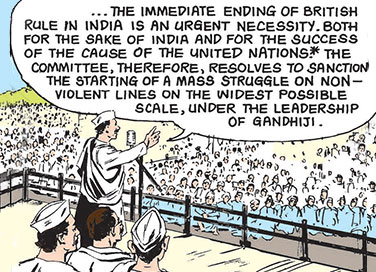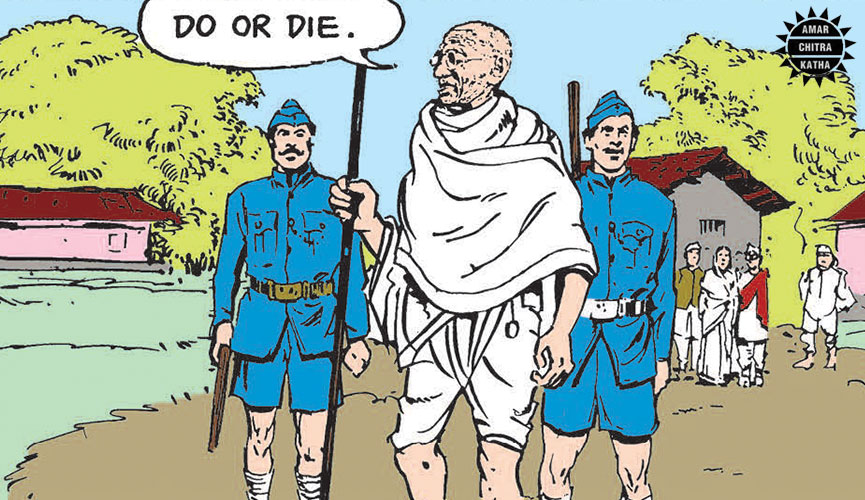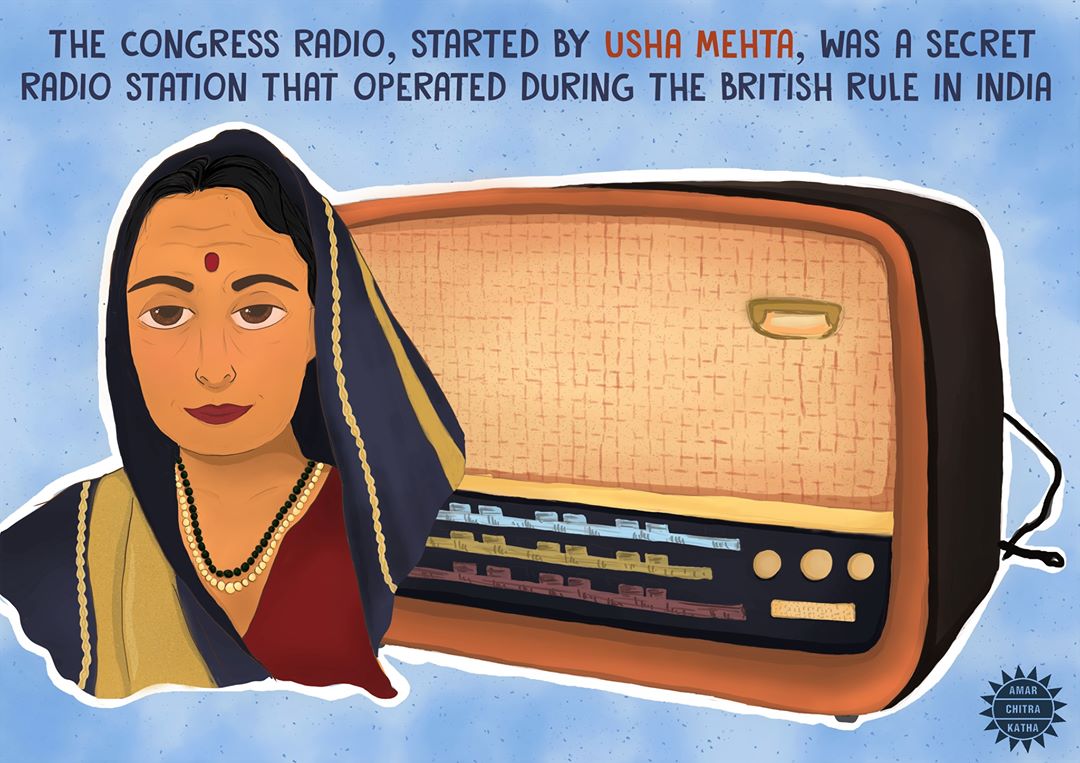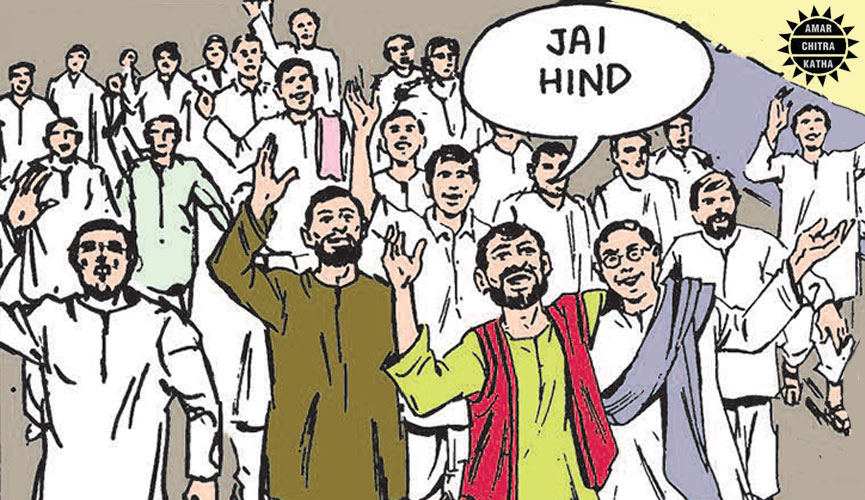8 Things To Know About Quit India
- August 6, 2020


8 Things To Know About Quit India
- August 6, 2020
By Nitya Menon
“This is the mantra, ‘Do or Die’, that I give you. You imprint it on your heart and let every breath of yours give an expression to it.” – Mahatma Gandhi
On August 8th, 1942, Mahatma Gandhi launched the Quit India Movement (also known as the August movement) in Bombay. This movement was a strong and vehement appeal made by the Congress to the British to leave India once and for all. The Indians demanded what they called ‘an orderly British withdrawal’ from India. Here are eight interesting facts about the Quit India Movement that will give you a better insight into India’s freedom struggle:
To receive more such stories in your Inbox & WhatsApp, Please share your Email and Mobile number.
The people involved in the Quit India Movement gathered at Mumbai’s Gowalia Tank Maidan during the All India Congress Committee session. This was the place where Mahatma Gandhi delivered his first speech that awakened a fierce spirit and desire for freedom among Indians, marking the beginning of the movement. The maidan also houses a monument as a tribute to this historical event.
This movement was started after the Cripps Mission failed in India. Headed by a senior British minister called Sir Stafford Cripps, this mission was an attempt by the British to secure support and cooperation from India for efforts in World War II. This mission failed for three main reasons:
– It faced Gandhi’s strong opposition which led to the Indian National Congress to reject the offer
– Cripps’ modification of the offer to include self-government had no real transfer of power
– There was an active effort by the Viceroy and Secretary of State for India to sabotage the mission.

It is believed that within hours of Gandhiji’s historic ‘Do or Die’ speech, almost the entire INC was imprisoned without trial. Several national leaders such as Sardar Vallabhai Patel, Jawaharlal Nehru, Maulana Abul Kalam Azad and Mahatma Gandhi himself were arrested. Little did they know that their merciless imprisonment would become the catalyst in eventually securing India’s freedom.
The British response to the movement was to declare the Indian National Congress an unlawful association. Everyone involved was arrested, offices were raided, and funds were frozen. In fact, more than 10,000 people were arrested for conducting peaceful protests across the country. The then viceroy and Governor-General of India, Lord Linlithgow, adopted a policy of brutal violence to stem the movement. However, this backfired on the British as it only garnered more sympathy among the general population towards the movement.
Despite several police warnings and government bans, Aruna Asaf Ali presided over the remaining AICC session, and on August 9, in the presence of a large crowd at the Gowalia Tank Maidan, she proudly hoisted the Indian tricolour. She was immensely influenced by the thoughts and ideals of Mahatma Gandhi, and was honoured with the Bharat Ratna Award in 1997.

Few of the younger leaders took upon the duty to broadcast news through an underground station, dubbed the Congress Radio. Organised by Dr. Usha Mehta, the operators had to keep moving and shifting their broadcasting equipment to avoid being captured by the British. On August 14th, 1942, a week after the Quit India Movement was launched, the radio went live with the following announcement announced by Dr. Usha Mehta herself:
“This is the Congress Radio calling on (a wavelength of) 42.34 meters from somewhere in India.”
On August 8th, 1942, a group of seven young students tried to hoist the Indian flag on the Patna Collectorate building to show their affiliation to the freedom struggle. What began as a patriotic gesture ended in tragedy, when, without an iota of hesitation, they were shot dead by the police. There is a memorial in their memory on the Collectorate premises in Patna. It’s known as the Shaheed Smarak, meaning Martyr’s Memorial.

As we all know, the British had been refusing to give India its independence for the fear of loss of power and dominance over colonies in Asia. However, after the Quit India Movement, the British government realised that they could no longer keep Indians under their control. India’s walk down the long road to freedom had entered its final chapter. After the conclusion of World War II in 1945, India gained freedom on August 15th, 1947.
Amar Chitra Katha’s vast collection of freedom fighter biographies is now available on the ACK Comics app, as well as on major e-tailers.
To receive more such stories in your Inbox & WhatsApp, Please share your Email and Mobile number.

Comic of The Month
The Naval Journey of India Book I
This book is the first of a three-book series that takes a deep and detailed look at India's Naval History and a deep insight into the lives of our men and women in white. But any series on the Indian Navy has to start at the very beginning - exploring India's celebrated maritime history. Join our little hero, Bharat, and his grandfather, Commodore Sagar, as they sail into the deep blue waters of time. Book I of The Naval Journey of India takes a sweeping look at India's maritime endeavours, how the seas impacted us over millennia and how the oceans made us who we are.